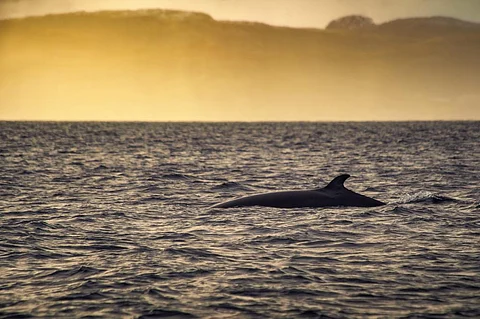

Whales, the world’s largest animal, astound with their enormity. But even the largest animal of the family has the smallest size it requires to survive, a new study found.
The researchers studied “rorqual whales”, a group of whales (including the blue whale) that need to be large because of their unique eating pattern. They gather food through a mechanism called ‘bulk filter feeding’. They dive deep and take in an enormous amount of water, along with all the living creatures swimming in it. Then, they strain out the ones they want to eat using a special filter structure in the roof of their mouths.
The smallest living species of this lineage, the Antarctic minke whale, needs to grow to at least 4.5 metres (approximately 15 feet or weighing 1-2 tonnes), to be able to eat enough to survive, the authors of the report published in the journal Nature Ecology & Evolution March 13, 2023 found. This is the length of a weaned minke juvenile, an article on the study in Stanford University News website stated.
The team of researchers fixed suction cups containing cameras and sensors to the backs of the Antarctic minke whales, the friendlier of the minkes. They logged and analysed 437 hours of orientation and movement data to “feeding rate compared to that of krill-feeding humpbacks and blues to identify potential size limitations”.
Understanding the minimum size whales need to attain to survive also provides clues as to how they will be impacted by climate change, according to the scientists from Stanford University, Duke University, University of California and others who carried out the research.
But to make that connection, we first need to understand why these large animals have held onto their seemingly unwieldy feeding pattern. Turns out, even the smallest of this group of whales forage more efficiently than the smaller non-filter-feeders.
“Larger filter-feeding whales, which can engulf proportionally more water per gulp than smaller whales, then had an evolutionary advantage over their smaller counterparts, giving rise to the largest animals in Earth’s history,” the Stanford University News article read.
Also, easy availability of krill, the small crustacean species they prey on, have enabled the “gigantism” of these whales. “Once whales evolved from eating one prey at a time to filter feeding many at once, the rise of gigantism was likely driven by an abundance of krill in prehistoric oceans, which favored their feeding style,” the author of the blog noted.
But the krills may perish as the oceans heat up and their habitats undergo other changes because of climate change. The whales restricted by their size and other physiological patterns may not adapt well to the changing environment and be threatened by extinction.
Depending on how krill fare, certain whale species will either win or lose in future oceans, said the study’s senior author Jeremy Goldbogen, an associate professor of oceans at the Stanford Doerr School of Sustainability.